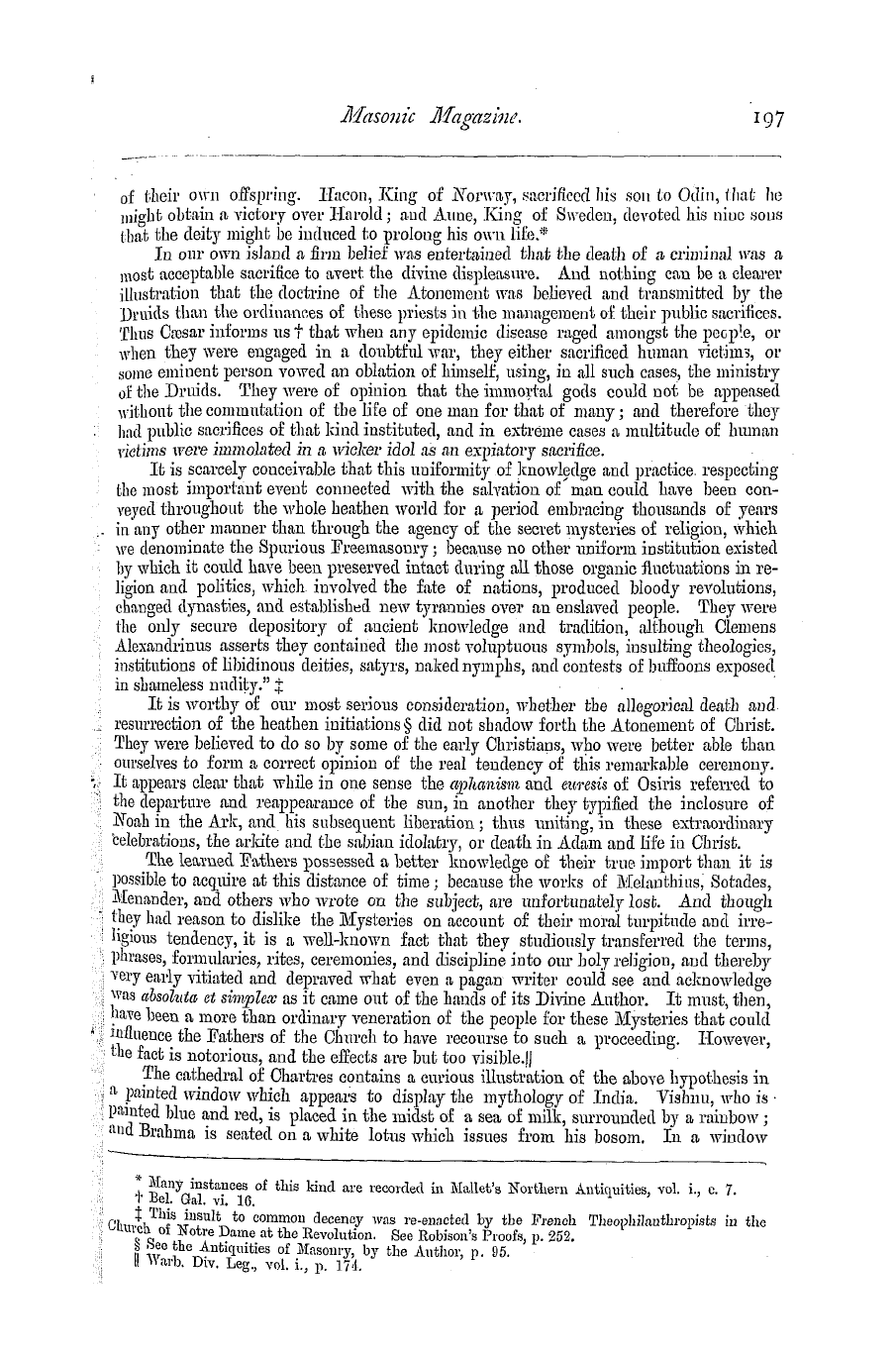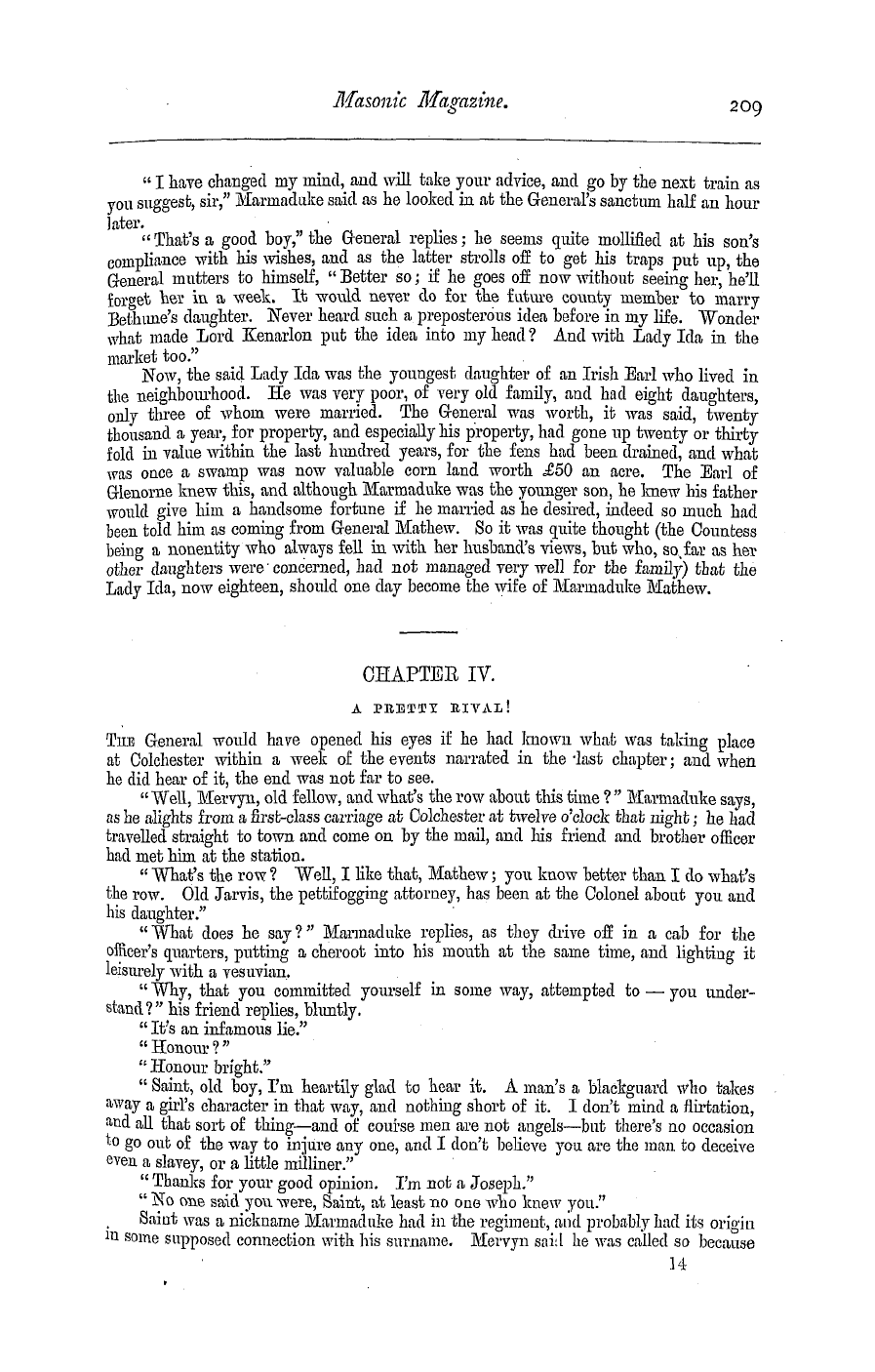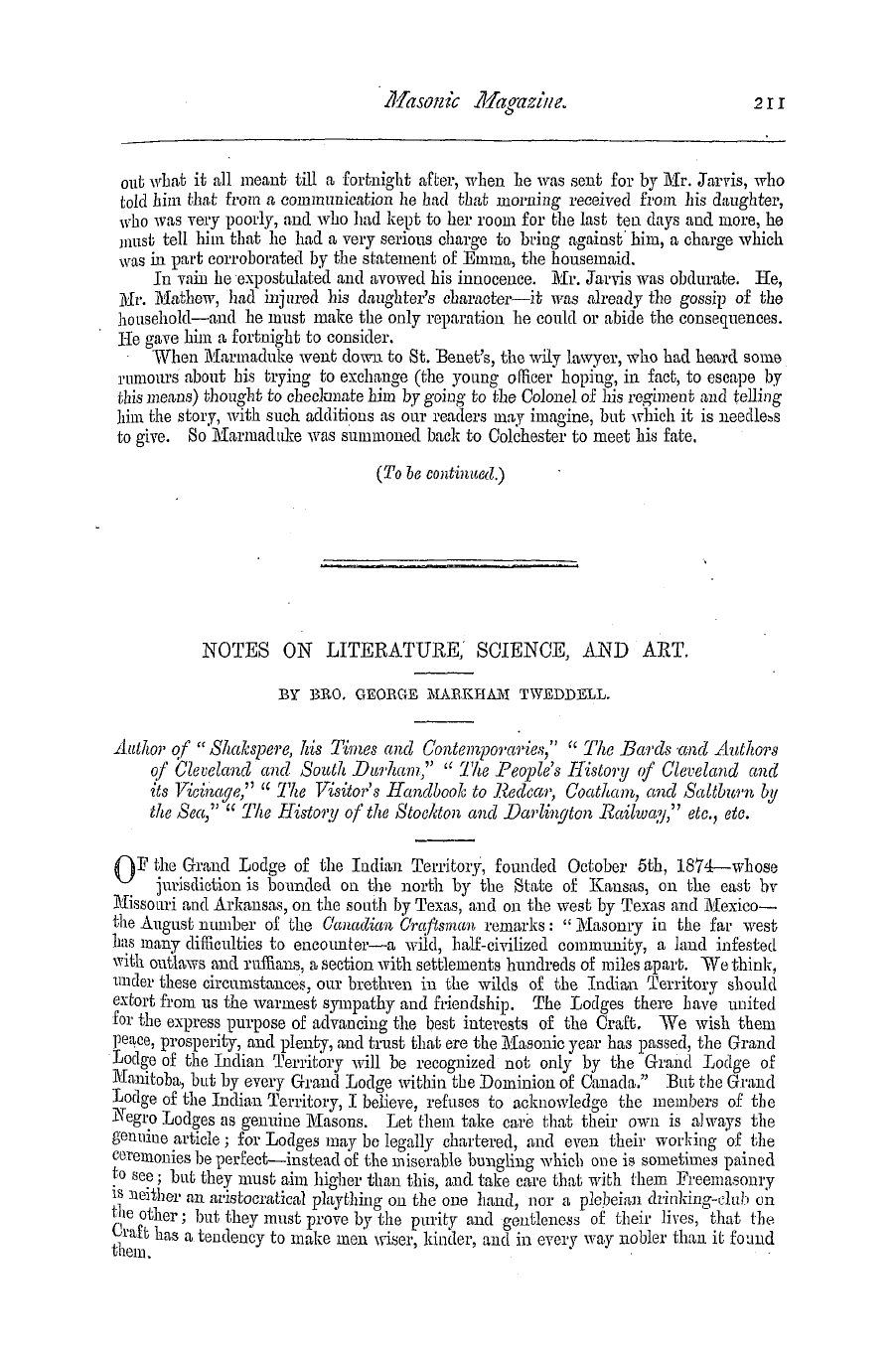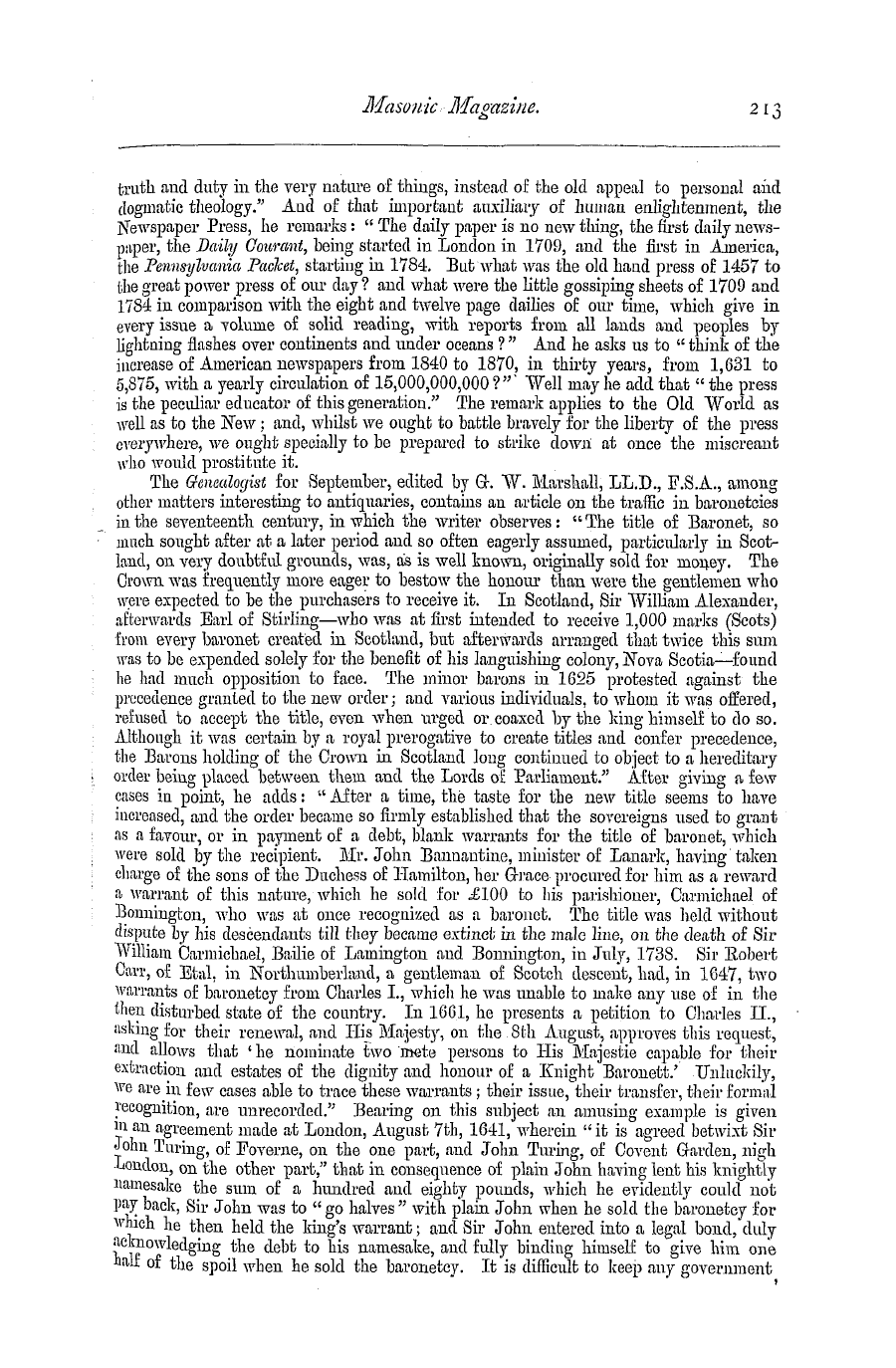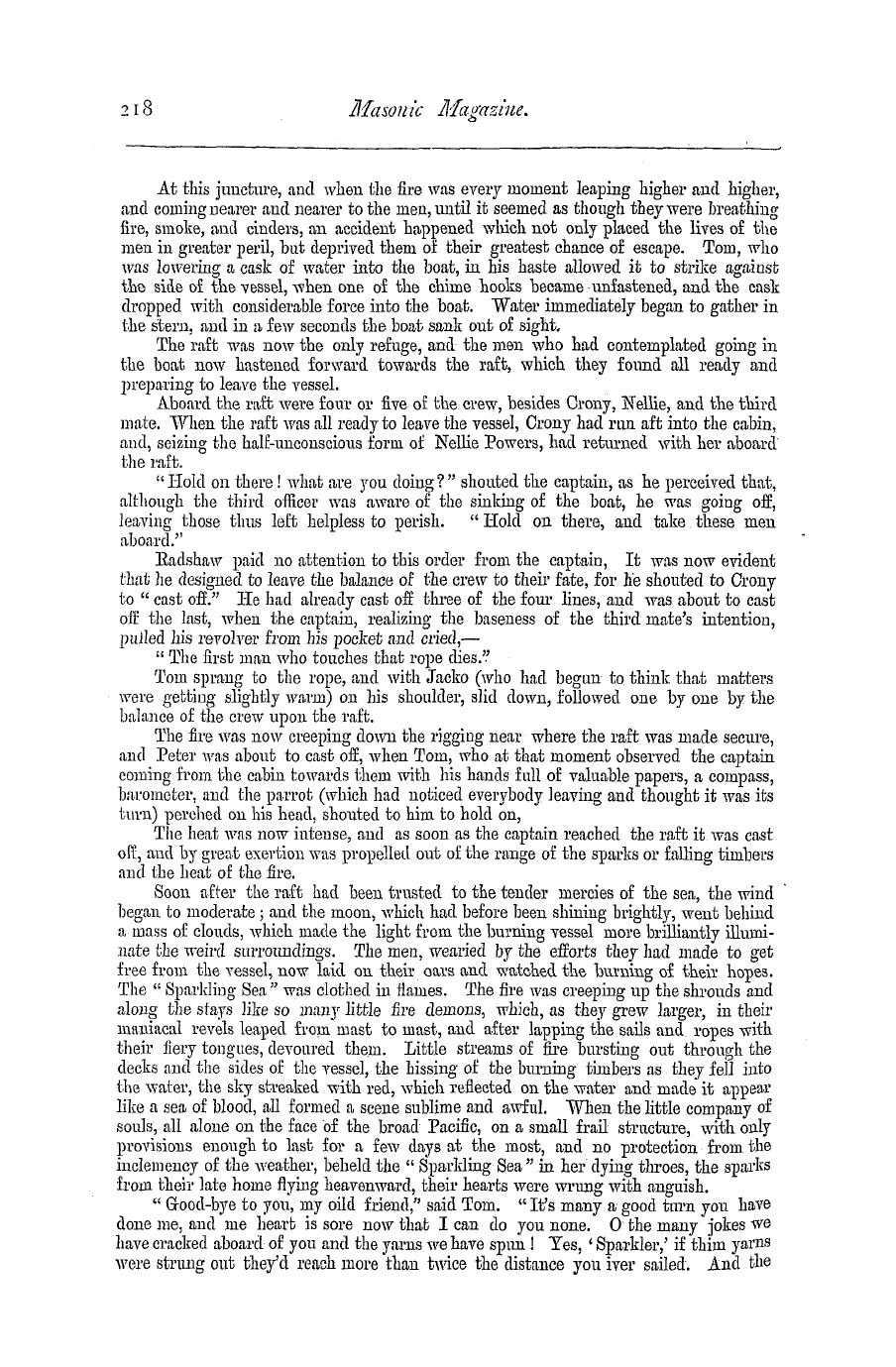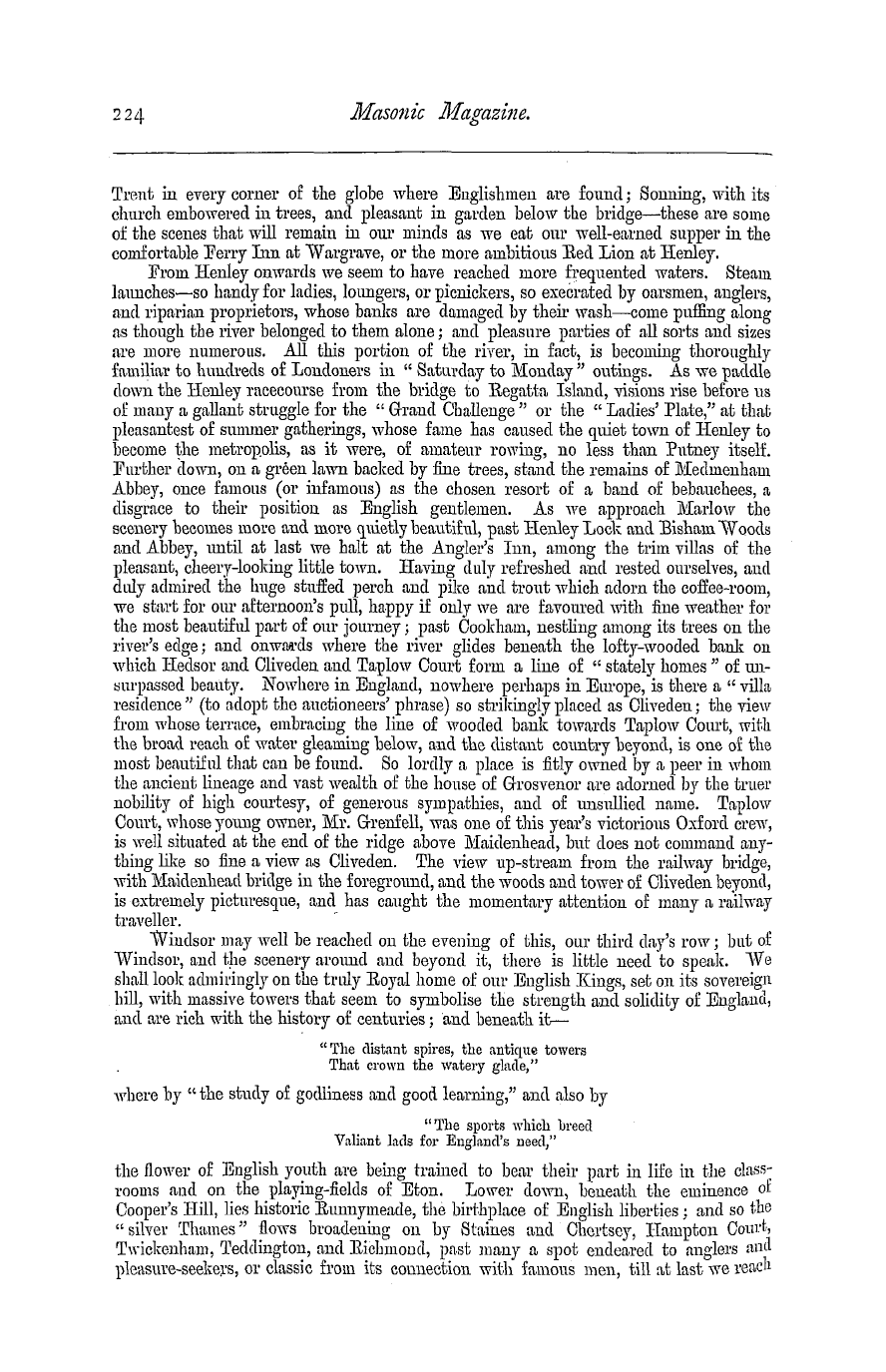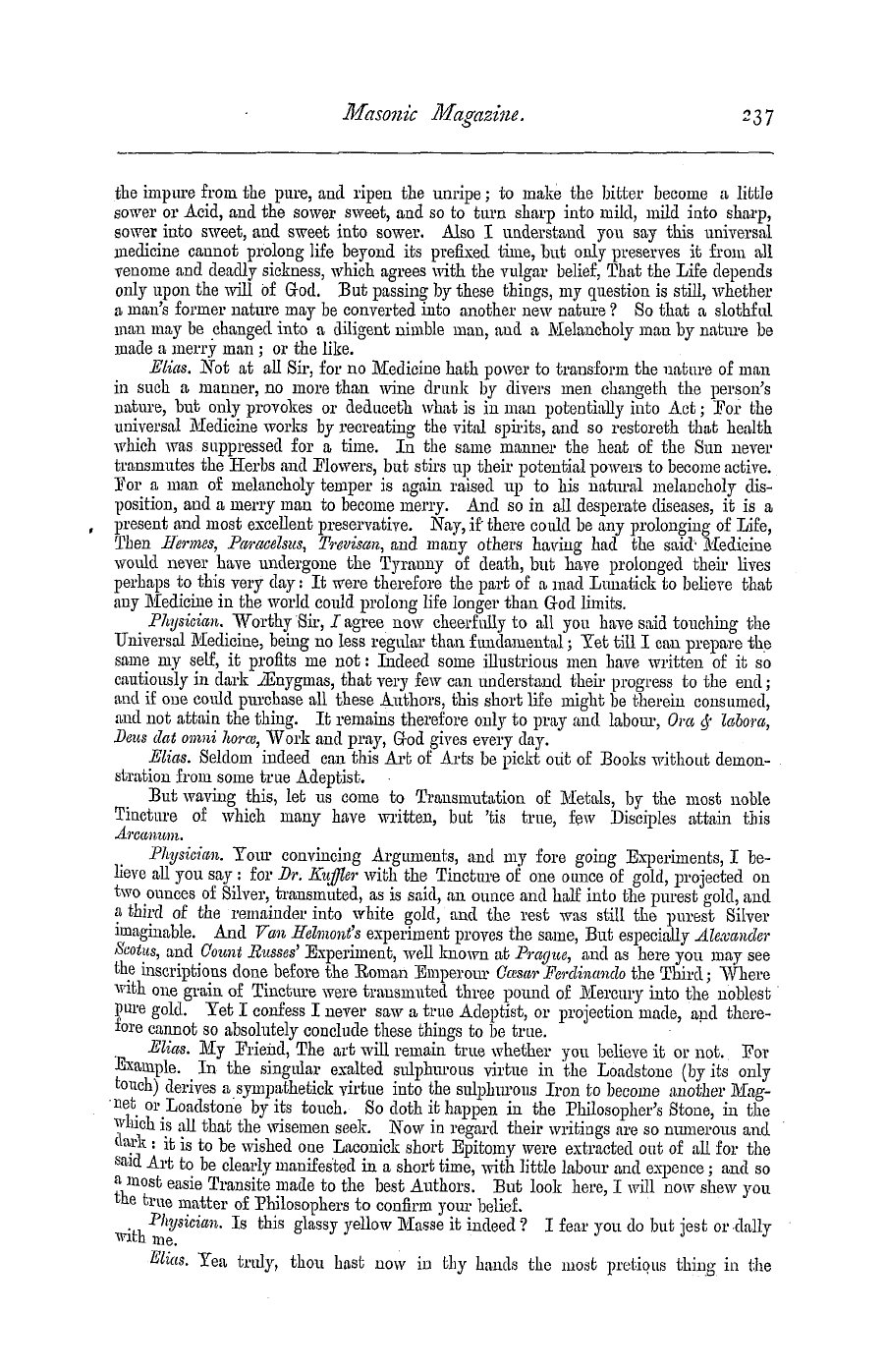-
Articles/Ads
Article ASSYRIAN DISCOVERIES. ← Page 3 of 5 →
Note: This text has been automatically extracted via Optical Character Recognition (OCR) software.
Assyrian Discoveries.
and elaborate descriptions of natural phenomena ? AA e reply in the pungent Avords of G . Smith , ' If this Avere true , the myth Avould have taken to create it a genius almost us great as that "of tlie philosophers Avho explained it . ' But Avhen from the historical Ave pass to the " chronological results of recent research , AA' 6 must frankly admit many difficulties . From Nimrod or Izdubar doAvnAvarcls the chronology UOAV stands scarcely disputed . Bishop Usher ancl the modern Assyrian scholars agree in placing him about
n . c . 2 , 250 , The difficulty is in the antecedent period from the Flood to his date , for AA'hich the received chronology alloAvs only a century . But we can scarcely conceive so vast a multiplication of mankind in the space of three generations , even if Ave compress the Avhole into the valleys of the Euphrates ancl the Tigris , as is eAudenced by the history and works of Nimrod . The Elamite conquest of Chaldea ( Gen xii . ) is frequently alluded to in the tabletsancl scholars agree in placing it about B . C . 2400150 or 200 years before
, , , Nimrod . But before it Ave have the tradition of 36 successive kings fromj-he Flood . If accepted at all , AVC may fairly alloAv 1 , 000 years for this succession ,. Avhich Avould place the Flood about B . C . 3 , 500 , or 1 , 000 years earlier than the popular chronology , This position AA'ould solve all difficulties . Ancl bearing in mind that succession , not chronology , is the object of the narrative , ancl that in the HebreAV and other Semitic tongues there are no distinct Avoids for the degrees of genealogy , tlie statement that Cosh was the
son of Ham ancl Nimrod the son of Gush need bear no closer interpretation than that Nimrod was descended from Ham through Gush . AVhen Ave see IIOAV genealogies are notoriously compressed , as in Matthew i ., for technical com'enience , ancl find that the Accadian cylinders compress them in the same Avay , and likewise use the same word for " son " and " descendant , " Ave are entitled , I submit , to aUoAv a period of indefinite extension , if other circumstances require it , for the dispersion and gradual increase of
mankind after the Flood . AA'hen Moses Avas supernaturady inspired dimly to sketch the great events and epochs of a far-reaching past , those great epochs towered one behind the other , as the traveller on the plains of India sees hundreds of miles away the peaks of the mi g hty Himalayan range in close array rising one behind the other , ancl his eye marks each in succession , AA'ithout taking note of the vast plains ancl wide uplands that intervene hidden and buried between each . So it is beneath the standpoint
of our faith to measure inspiration by applying the cold bald precision of western criticism to the figurative expressions and vivid metaphors Avhich are the natural outcome of oriental thought , or to measure it b y the position of a clot or a point in the Hebrew numerals . AVhen from the historical AVO proceed to that eye of history , the geographical ancl topographical details of the early Scriptures , our attention ' is directed chiefly to the journal of the Avanderings of the Exodus , ancl the allotment of the Land of Promise .
"These are full of topographical notes on the Siniatic Peninsula , ancl the various countries east of Jordan , while the Domesday Book of Joshua describes Avith the fulness of a government survey the various tribal ' boundaries , and contains long lists of the towns and villages allotted to each tribe . Till recently these countries had never been accurately surveyed . Geographical precision ancl strong local colouring AA'e find to pervade the whole narrative ; and the events circumstantially recorded in Exodus are of
such a character that' on the acceptance of them as historical facts depends the Avhole question of the truth of the Old Testament . The recent surveys of the Sinaitic Peninsula have shoAyn the most exact accordance of the record of the Exodus Avith existing topographical facts , an accordance which would be inconceivable unless the history Avere compiled at the time . Mr . Holland ' s researches have shoAvn that at that very date the mining region north-east of Suez Avas occupied by strong Egyptian garrisons , ancl that the Israelites could
haA'e taken no other route than the southern one between Jebel or Eahab ancl the Red Sea . Then , after crossing the Eed Sea , Ave have Ay fin Musa ( Moses' Wells ) , then three days' journey AA'ithout Avater , then the bitter springs of Marah ( Ain Hawarah ) , then Elim ( WadyGharandel ) , with its palm trees and vegetation still existing . From Elim they go back to the sea , and follow down the coast . Then , Avhere a bold headland forbids further progress , ' they removed from the Eed Sea , ancl encamped in the Avilderness of Sin '—i . e ., when the headland Eas Abu Zenimeh forbids
Note: This text has been automatically extracted via Optical Character Recognition (OCR) software.
Assyrian Discoveries.
and elaborate descriptions of natural phenomena ? AA e reply in the pungent Avords of G . Smith , ' If this Avere true , the myth Avould have taken to create it a genius almost us great as that "of tlie philosophers Avho explained it . ' But Avhen from the historical Ave pass to the " chronological results of recent research , AA' 6 must frankly admit many difficulties . From Nimrod or Izdubar doAvnAvarcls the chronology UOAV stands scarcely disputed . Bishop Usher ancl the modern Assyrian scholars agree in placing him about
n . c . 2 , 250 , The difficulty is in the antecedent period from the Flood to his date , for AA'hich the received chronology alloAvs only a century . But we can scarcely conceive so vast a multiplication of mankind in the space of three generations , even if Ave compress the Avhole into the valleys of the Euphrates ancl the Tigris , as is eAudenced by the history and works of Nimrod . The Elamite conquest of Chaldea ( Gen xii . ) is frequently alluded to in the tabletsancl scholars agree in placing it about B . C . 2400150 or 200 years before
, , , Nimrod . But before it Ave have the tradition of 36 successive kings fromj-he Flood . If accepted at all , AVC may fairly alloAv 1 , 000 years for this succession ,. Avhich Avould place the Flood about B . C . 3 , 500 , or 1 , 000 years earlier than the popular chronology , This position AA'ould solve all difficulties . Ancl bearing in mind that succession , not chronology , is the object of the narrative , ancl that in the HebreAV and other Semitic tongues there are no distinct Avoids for the degrees of genealogy , tlie statement that Cosh was the
son of Ham ancl Nimrod the son of Gush need bear no closer interpretation than that Nimrod was descended from Ham through Gush . AVhen Ave see IIOAV genealogies are notoriously compressed , as in Matthew i ., for technical com'enience , ancl find that the Accadian cylinders compress them in the same Avay , and likewise use the same word for " son " and " descendant , " Ave are entitled , I submit , to aUoAv a period of indefinite extension , if other circumstances require it , for the dispersion and gradual increase of
mankind after the Flood . AA'hen Moses Avas supernaturady inspired dimly to sketch the great events and epochs of a far-reaching past , those great epochs towered one behind the other , as the traveller on the plains of India sees hundreds of miles away the peaks of the mi g hty Himalayan range in close array rising one behind the other , ancl his eye marks each in succession , AA'ithout taking note of the vast plains ancl wide uplands that intervene hidden and buried between each . So it is beneath the standpoint
of our faith to measure inspiration by applying the cold bald precision of western criticism to the figurative expressions and vivid metaphors Avhich are the natural outcome of oriental thought , or to measure it b y the position of a clot or a point in the Hebrew numerals . AVhen from the historical AVO proceed to that eye of history , the geographical ancl topographical details of the early Scriptures , our attention ' is directed chiefly to the journal of the Avanderings of the Exodus , ancl the allotment of the Land of Promise .
"These are full of topographical notes on the Siniatic Peninsula , ancl the various countries east of Jordan , while the Domesday Book of Joshua describes Avith the fulness of a government survey the various tribal ' boundaries , and contains long lists of the towns and villages allotted to each tribe . Till recently these countries had never been accurately surveyed . Geographical precision ancl strong local colouring AA'e find to pervade the whole narrative ; and the events circumstantially recorded in Exodus are of
such a character that' on the acceptance of them as historical facts depends the Avhole question of the truth of the Old Testament . The recent surveys of the Sinaitic Peninsula have shoAyn the most exact accordance of the record of the Exodus Avith existing topographical facts , an accordance which would be inconceivable unless the history Avere compiled at the time . Mr . Holland ' s researches have shoAvn that at that very date the mining region north-east of Suez Avas occupied by strong Egyptian garrisons , ancl that the Israelites could
haA'e taken no other route than the southern one between Jebel or Eahab ancl the Red Sea . Then , after crossing the Eed Sea , Ave have Ay fin Musa ( Moses' Wells ) , then three days' journey AA'ithout Avater , then the bitter springs of Marah ( Ain Hawarah ) , then Elim ( WadyGharandel ) , with its palm trees and vegetation still existing . From Elim they go back to the sea , and follow down the coast . Then , Avhere a bold headland forbids further progress , ' they removed from the Eed Sea , ancl encamped in the Avilderness of Sin '—i . e ., when the headland Eas Abu Zenimeh forbids




